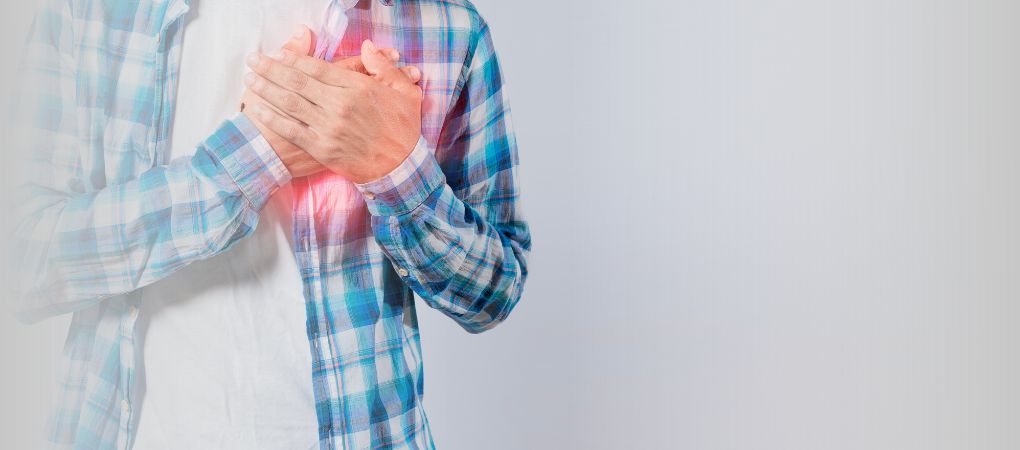Francesca Galiano
|
13/09/2023 - Last update 10/11/2023
Leonid Tafler, Aysham Chaudry, Heejin Cho, Angeles Garcia | Year 2023
Management of Post-Viral Postural Orthostatic Tachycardia Syndrome With Craniosacral Therapy
Pathology:
Postural orthostatic tachycardia syndrome (POTS)
Type of study:
Case Report
Date of publication of the study’:
2023/Feb/15

Purpose of the study
- Objective: to show the management of a case of orthostatic postural tachycardia syndrome diagnosed 1 year after Covid-19 infection using OMT and craniosacral therapy.
- Measured outcomes: assessment of symptoms and change in heart rate by active standing test.
Participants
- Number: 1
- Description: a 39-year-old man with sinus tachycardia and chest palpitations for the last 12 months. The symptoms started after a Covid-19 infection. No significant personal or family medical history while physical examination showed no particular signs.
His heart rate was 125 beats per minute at rest and 150 during exercise such as walking. The symptoms adversely affected his daily activities and work. No factors were reported to alleviate or worsen the symptoms. Numerous cardiologic, blood, and metabolic examinations and tests were negative, as were radiographic, ECG, and vascular Doppler images prior to the study. However, viral pathology does not appear to have been considered.
New carotid doppler, cardiac stress test, ECG, and echocardiogram were normal. A 14-day Holter showed 3 patient-induced events, two of them with sinus tachycardia.
At this point, after an osteopathic evaluation, it was decided to treat the patient with craniosacral therapy.
Interventions and evaluations
- Assessment of symptoms and change in heart rate before and after standing active test.
- 8 weekly sessions.
- OMT:
- Craniosacral therapy with compression of the fourth ventricle.
Results
After the first session, the patient reported an improvement in symptoms and resting heart rate (down to 95 beats per minute), but this effect was lost in the following days.
At the following visit, a week later, an active standing test showed an increase in heart rate of 39 beats in moving from supine to upright position, whereas, however, the blood pressure remained normal, which allowed orthostatic hypotension to be ruled out.
The next osteopathy session was based specifically on compression of the fourth ventricle. The result was that, on repeating the test, from supine to upright position the heart rate increased by only 12 beats. At a further session, the situation was repeated in the same way, with OMT reducing the increase in heart rate during the test.
Over the next 5 visits, the difference in heart rate between standing and supine gradually decreased to less than 10-15. In the meantime, the heart rate also began to fall during the week and to rise slightly (eg, up to 88 beats per minute) during activities such as walking.
After the last session, the patient reported relief from tachycardia and palpitations for more than 6 months.
Discussion
Postural orthostatic tachycardia syndrome, ie, an abnormal autonomic response in standing upright, can be of different types: neuropathic, hyperadrenergic, hypovolemic, and from secondary causes (eg, diabetes, Lyme disease, systemic lupus erythematosus, and Sjogren’s syndrome). This syndrome may also occur as a result of autoimmunity events, such as cross-reactivity of viral antibodies to acetylcholine, catecholamine, and angiotensin receptors at the level of the autonomic ganglia. Most likely, the case presented here is due to a neuropathic cause secondary to Covid-19 infection.
Unfortunately, despite many cardiology visits, the patient did not receive a diagnosis until much later. To make up for it a physical examination together with a complete blood count and complete metabolic panel should be conducted in every case of otherwise unexplained sinus tachycardia. Should the findings be negative, then a complete cardiology and neurological analysis would be needed to rule out other causes. Finally, a tilt test should be carried out to rule out orthostatic hypotension.
Initially, behavioral and possibly pharmacological strategies should be implemented. In this case of refractory syndrome, craniosacral therapy, particularly compression of the fourth ventricle, was seen to be particularly effective. Most likely, this technique promoted an autonomic balance between the orthosympathetic and parasympathetic branches.
Consequently, despite limited data, craniosacral therapy performed by a trained osteopathic physician can be considered as a feasible intervention in the management of postural orthostatic tachycardia syndrome.
The review of Osteopedia
By Marco Chiera
Strengths: good description of the case and of the technique applied; good introduction and discussion of the article; use of figures to explain the etiology or diagnosis of the pathology studied.
Limits: like any case report, is difficult to generalize the results. In addition to the autonomic aspect, the authors could have carried out some consideration of the possible immune and lymphatic effects of craniosacral or osteopathic therapy.

Are you an osteopath?
Register and enjoy the membership benefits. Create your public profile and publish your studies. It's free!
Register now
School or training institution?
Register and enjoy the membership benefits. Create your public profile and publish your studies. It's free!
Register now
Do you want to become an osteopath? Are you a student?
Register and enjoy the membership benefits. Create your public profile and publish your studies. It's free!
Register now







